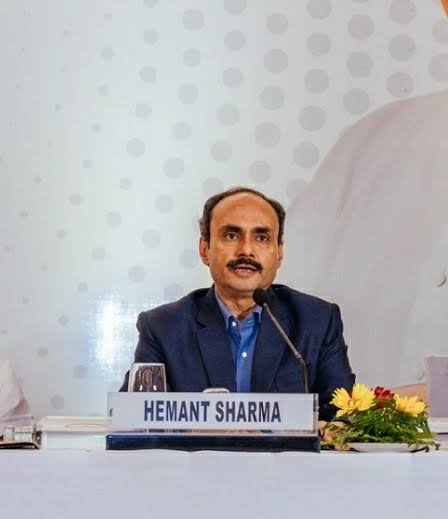Major GST Reforms to Make Daily Goods Cheaper from September 22

Odisha CM Majhi hails decision as a boost for farmers, small traders and households
Bhubaneswar : India’s indirect tax regime is set for a historic overhaul, with the GST Council approving sweeping changes aimed at rationalising rates, lowering costs for households, and simplifying compliance. Starting September 22, a wide range of daily-use goods will become cheaper as tax rates shift into just two broad slabs—5 per cent and 18 per cent—while a steep 40 per cent slab has been reserved exclusively for sin and luxury goods.
For the common consumer, this reform translates into lower household expenses, particularly on food, healthcare, and essential consumer goods. For Odisha, Chief Minister Mohan Charan Majhi welcomed the move, saying the reforms would directly benefit farmers, MSMEs, kendu leaf workers, and middle-class families, aligning with Prime Minister Narendra Modi’s vision of a “Vikshit Bharat” by 2047.
Food and Daily Essentials to Cost Less
The largest impact will be felt on household groceries and processed foods. UHT milk will now be tax-free, while products such as condensed milk, butter, ghee, paneer, and cheese have seen their GST rates reduced from 12 per cent to 5 per cent, or exempted altogether.
Staple food items such as pasta, malt, starches, biscuits, cornflakes, chocolates, and cocoa products will also become cheaper, with tax rates cut to 5 per cent. Dry fruits and nuts—including almonds, pistachios, cashews, and dates—earlier taxed at 12 per cent, will now attract just 5 per cent GST.
Packaged foods like vegetable oils, edible spreads, sausages, fish and meat products, and malt-based preparations have also shifted to the 5 per cent slab. Popular Indian snacks such as namkeens, bhujia, mixture, and chabena, earlier charged at 18 per cent, will now fall under the 5 per cent slab, making them more affordable for everyday households. Even mineral and aerated waters (without sugar or flavours) will move from 18 per cent to 5 per cent.
Relief for Agriculture and Fertilisers
Agriculture, the backbone of Odisha’s economy, is among the biggest beneficiaries. Fertilisers, previously taxed at 12–18 per cent, will now fall under the 5 per cent slab, easing costs for farmers. Agricultural inputs such as seeds and crop nutrients will also be cheaper, ensuring better affordability for small and marginal farmers across the state.
Chief Minister Majhi noted that reduced tax on kendu leaves—from 18 per cent to 5 per cent—would directly benefit thousands of tribal families engaged in collection and procurement. “This will lead to higher sales volumes and better prices for tribal workers,” he said.
Major Boost for Healthcare
Healthcare too has received a significant push. Life-saving medicines, health-related products, and medical devices have seen sharp rate cuts, in some cases down to nil. Individual life and health insurance policies—including family floater policies—will now be GST-exempt, increasing affordability for middle- and lower-income families.
Everyday medical equipment such as thermometers and glucometers will now attract just 5 per cent GST. Experts say this will improve healthcare access in states like Odisha, where rural households often struggle with affordability of essential medicines and diagnostic devices.
Cheaper Consumer Goods and Textiles
For middle-class families, reductions on footwear and textiles—from 12 per cent to 5 per cent—are likely to bring immediate relief. Entry-level electrical appliances, earlier taxed at 28 per cent, have been rationalised to 18 per cent, making them more accessible.
Small traders and MSMEs in Odisha’s textile hubs such as Berhampur and Sambalpur are expected to benefit from lower compliance costs and higher consumer demand due to price reductions.
Sin Goods Under Heavy Taxation
While most essential items have seen relief, the government has tightened the screws on tobacco and luxury products. Cigarettes, gutkha, pan masala, zarda, and unmanufactured tobacco will continue under high GST slabs and compensation cess until pending cess-linked loans are cleared.
The valuation of these goods will now be shifted to Retail Sale Price (RSP) instead of transaction value, ensuring stricter compliance and curbing tax evasion.
A new 40 per cent GST slab has been introduced for sin and luxury goods such as cigarettes, premium liquor, aerated drinks with sugar, and high-end cars. Imported armoured sedans will be exempt only in special cases, such as for the President’s Secretariat.
Odisha’s Gains and National Impact
For Odisha, the reforms come at a crucial time when the state is working to strengthen tribal livelihoods, support farmers, and boost MSME growth. The tax rationalisation is expected to ease compliance burdens, reduce production costs, and stimulate rural demand.
Nationally, experts believe the reforms will increase disposable income, drive consumer demand, and stimulate economic growth. Finance Minister Nirmala Sitharaman said the restructuring marks a step towards “a simpler, more efficient tax regime that balances revenue needs with citizen welfare.”
With the implementation date set for September 22, households, farmers, and small traders across Odisha and the nation are preparing to welcome a new era of affordability under India’s indirect tax system.








